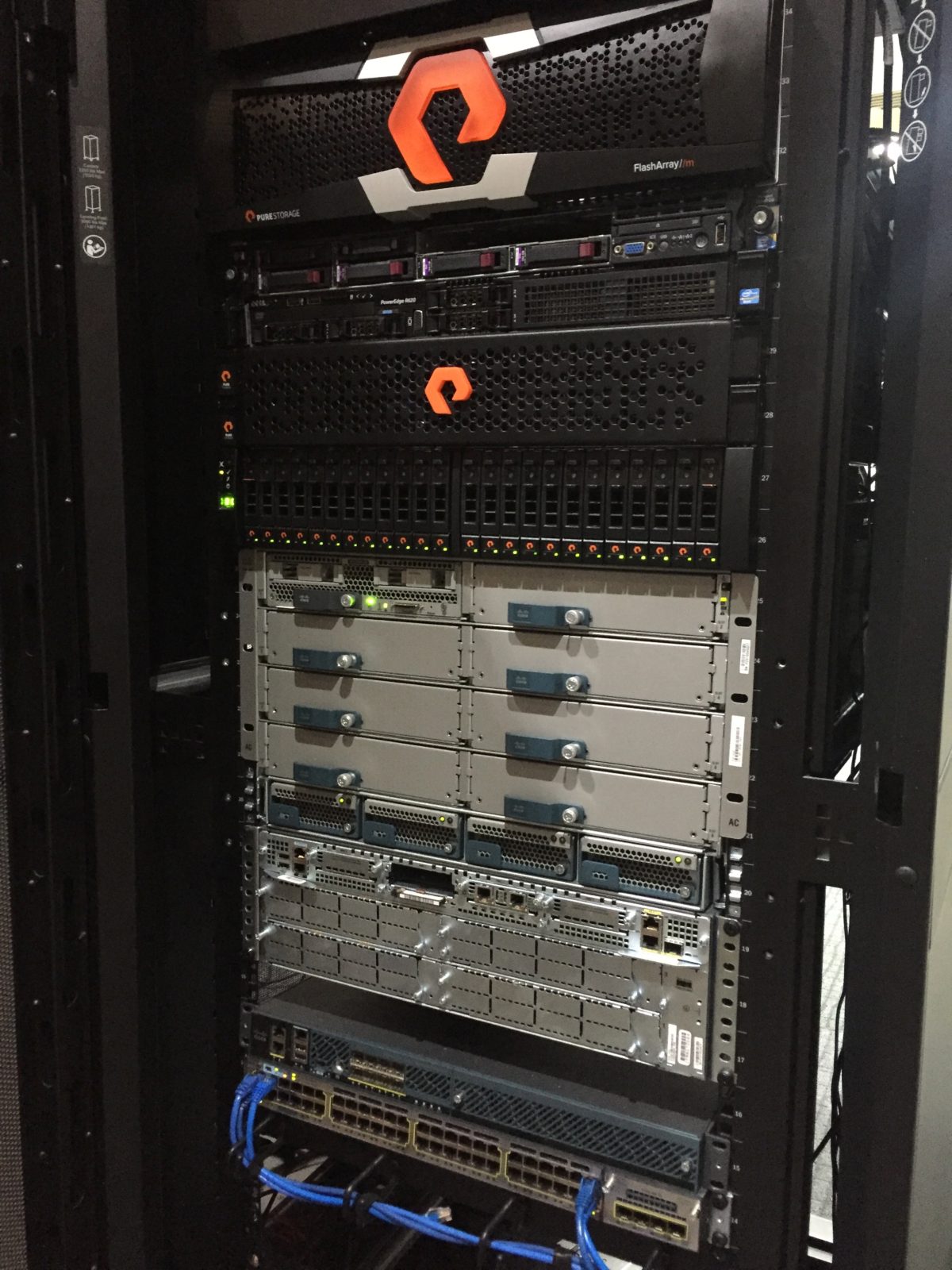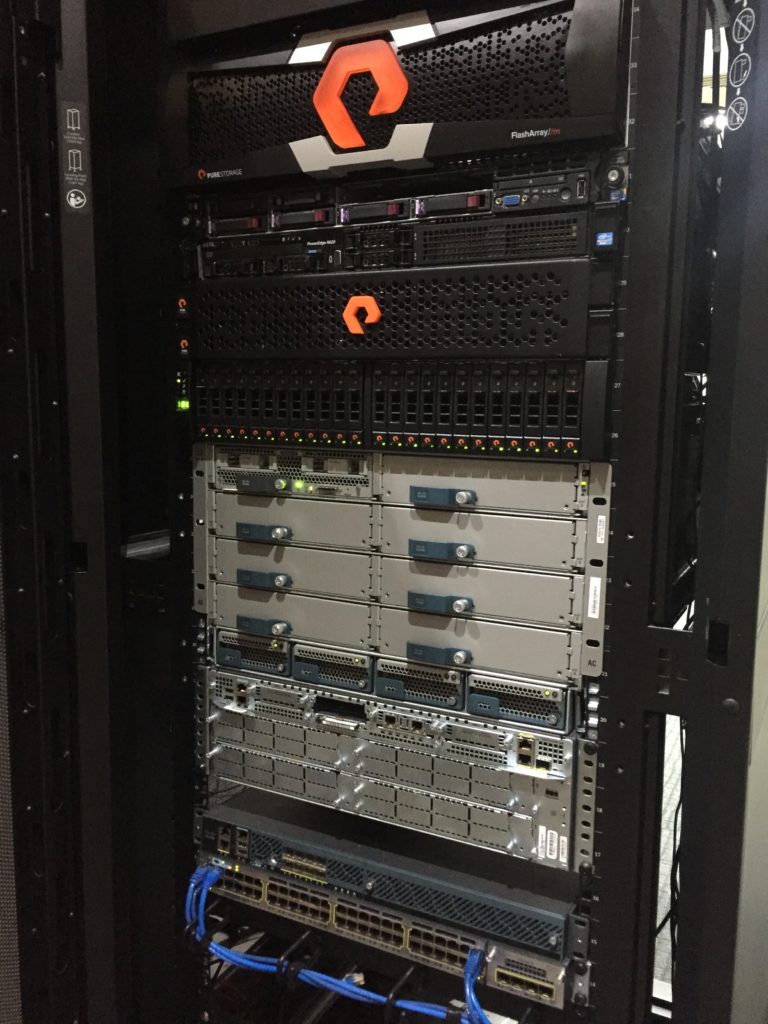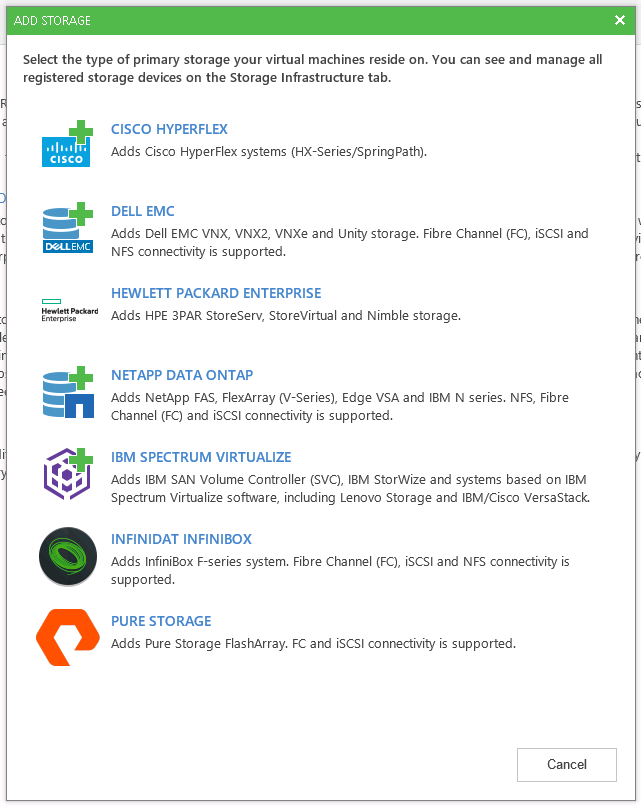In my previous article on the Veeam Data Lab I highlighted why you would utilise this functionality with a couple of real world examples. In the next few posts I intend to show how you would accomplish this.
The first step in any Data Lab deployment, or the automated testing for backup (SureBackup) and replication (SureReplica), should always be the requirements gathering phase. This phase is critical for the Data Lab as it identifies what you want to test, and the VMs required. Once the VM or group of VMs to be utilised in the Data Lab have been identified it becomes quite easy to map out any dependancies on other VMs, as well as networking dependancies.
Let’s look at a fairly simple setup for a SharePoint environment. The SharePoint environment to be tested is made up of:
- A WEB server (192.168.2.16);
- An APP server (192.168.2.15); and
- A SQL server (192.168.2.14).
They have dependancies on DNS, and Active Directory, both provided by a Domain Controller.
- DC (192.168.3.240)
All servers have been configured with static IP addresses, with the SharePoint servers inside of one subnet, and the DC in another.
For testing purposes a single static IP address within the Production environment that can provide access to the WEB server is configured sufficient.
In our example the two networks in the Production environment to be emulated are 192.168.2.0/24 on VLAN 302 (SharePoint) and 192.168.3.0/24 on VLAN 303 (DC), and the user network is 192.168.1.0/24 on VLAN 301, and all gateway servers are x.x.x.254.
The emulated environment inside the Data Lab will be:
- WEB 192.168.2.16/24 on VLAN 3302
- APP 192.168.2.15/24 on VLAN 3302
- SQL 192.168.2.14/24 on VLAN 3302
- DC 192.168.3.240/24 on VLAN 3303
- WEB access IP 192.168.1.216 on VLAN 301
This means that the emulated environment and the real servers will have the same IP addresses, and this is key as SharePoint servers will be looking for connectivity between each other and the DC on these IP addresses through DNS lookups. To achieve this the Data Lab will deploy a virtual Proxy Appliance to provide network address translation on virtual NICs.
Production diagram
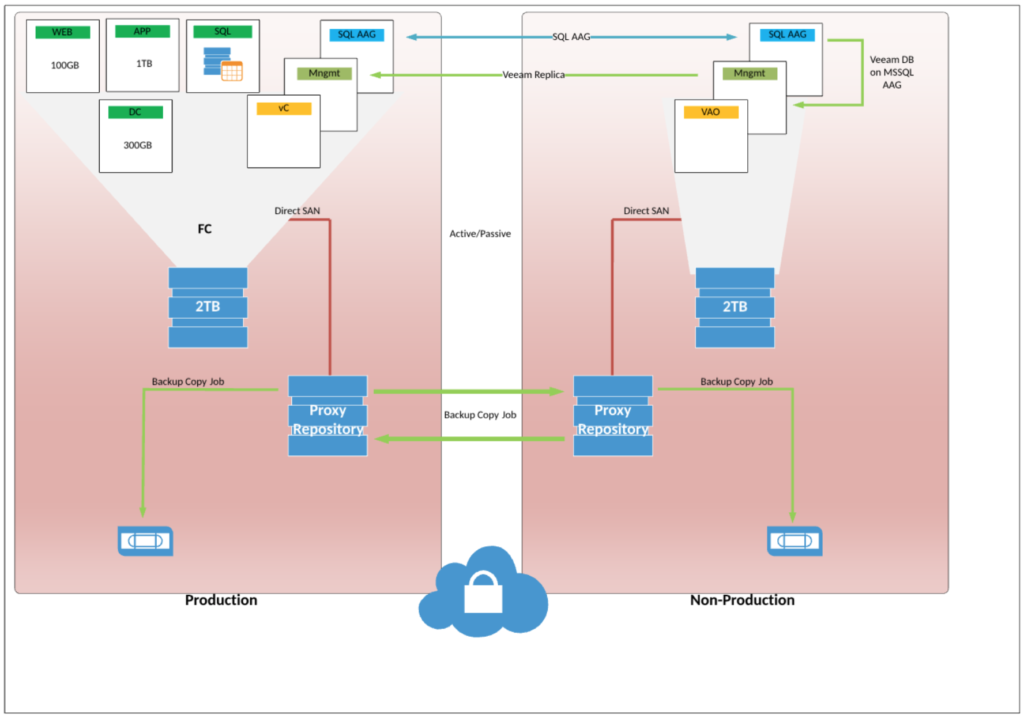
Data Lab diagram
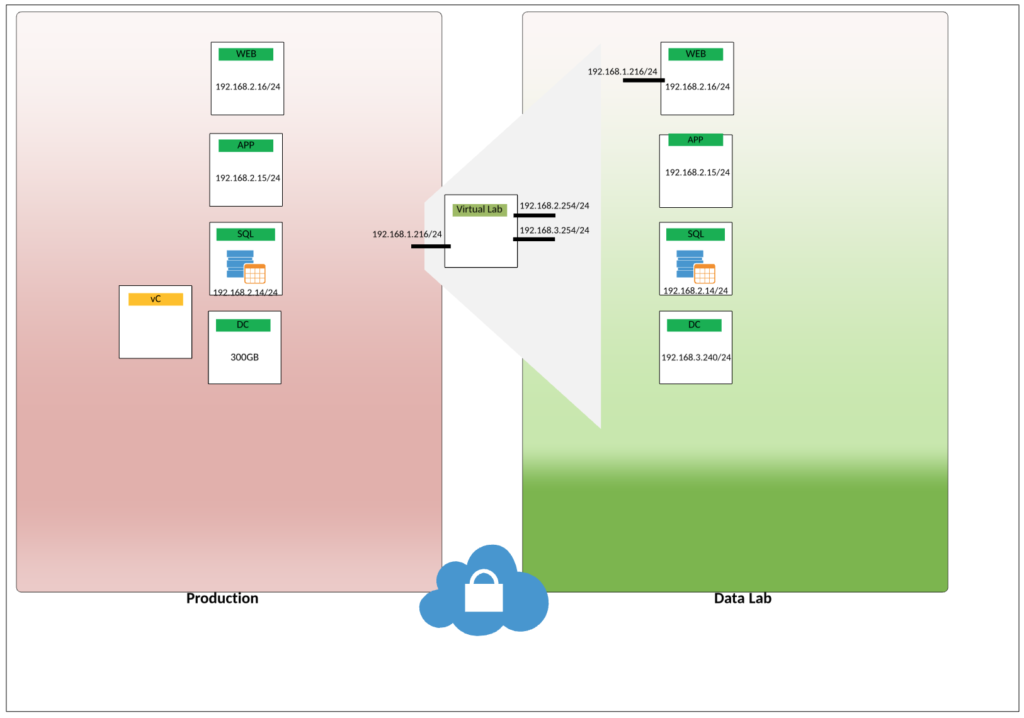
Now that we have a basic design it can be applied to the environment as shown in Part Three.

